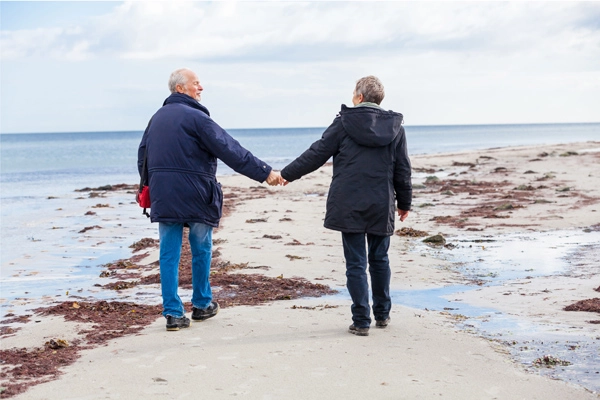Heart valve replacement, pacemaker, new life


It’s a common expression among heart doctors, nurses and other cardiac experts: “There’s no such thing as a routine heart study.” Maria C. is a perfect example of why that’s true.
When she fell outside her Gervais home, Maria chalked it up to some slippery pavement. One of her adult daughters was home and saw her mother lying on the ground, unable to get up. She immediately called 911.
“When the paramedics got there, they insisted I go to the hospital,” Maria recalls.
At Salem Health, she was immediately given an angiogram — a special X-ray that determines whether the arteries are clogged. The angiogram revealed that one of the valves in her heart wasn’t working properly — definitely not a routine test result.
Maria’s doctors, nurses and care providers discussed her case and made decisions together as a team. Her cardiologists, Matthew Fedor, MD, and Kamran Ghalili, MD, determined that she needed valve-replacement surgery as soon as possible. Juan Oyarzun, MD, a cardiothoracic (heart and chest) surgeon, would perform the surgery the very next day.
A week later, while still in the hospital, Maria had a pacemaker implanted. As soon as she was discharged, she began a six-month program of outpatient cardiac rehabilitation.
All of Maria’s treatment was provided at Salem Health, where her entire team of experts constantly consulted with one another, coordinated treatments and worked seamlessly to care for her.
Everyone working together
For patients, there are many advantages — some of them life-saving — in getting comprehensive cardiac care in one, centralized location.
Diagnostic tests aren’t duplicated unnecessarily, all members of the health care team discuss things together, and surgeries or other treatments can begin immediately if needed.
Cardiac rehabilitation also begins while the patient is still in the hospital and continues in the same location after the patient is discharged.
“It’s not unusual to have patients come in for a diagnostic study and end up having a procedure for a serious issue that requires prompt intervention,” says Dr. Oyarzun. “The [medical] literature more and more aims for this kind of approach. There are better outcomes and more cost benefits to having services under one umbrella.”
Creating a new lifestyle
Maria is taking her new lease on life seriously and using the skills she learned during cardiac rehabilitation. She and her husband, along with their three adult children and two grandchildren, live together on 10 acres. Everyone is on board with helping Maria live healthier.
“My whole diet has changed. I don’t eat a lot of greasy stuff anymore, I use olive oil, I watch my carbs, I watch my portions, and I’ve reduced my salt intake,” she says. She also walks three laps with her grandkids around the family’s property every day. “The rehab helped me take care of myself. The therapists really encouraged me, and I could see it was for my own benefit.”
As for her health care team, they couldn’t be more pleased. “We’re very happy that Maria is doing well now,” Dr. Oyarzun says with a smile.